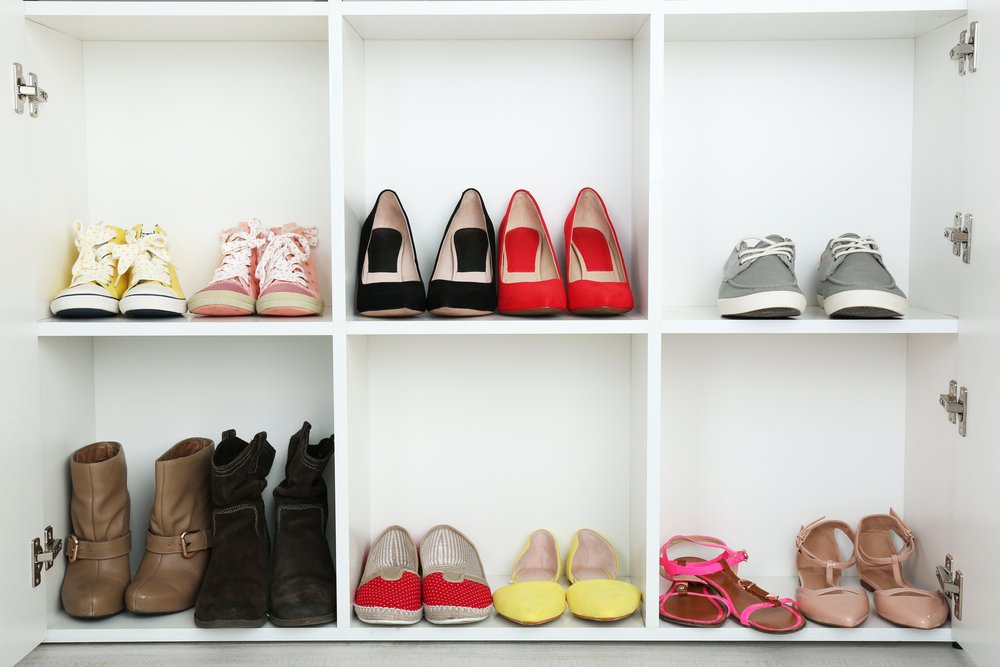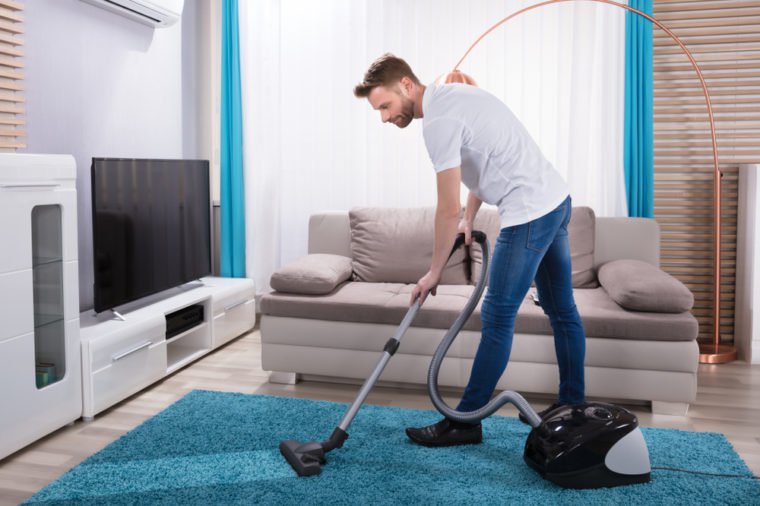How they stop their dining-room table from becoming a catchall and the exact color upholstery they buy that hides their messes best.
They choose forgiving decor

Some might call it deceiving, but we call it practical. When it comes to design elements and furniture, choose styles that are low maintenance. For example, kitchen tiles (or an entryway doormat) in a medium-toned pattern will conceal footprints and dirt better than tiles in a bright white marble. The same goes for glass coffee tables and mirrors, which will show fingerprints and cup rims as soon as you touch them. As for low-maintenance wood stains, look for colors on the middle of the spectrum; light stains will show dirt and dark stains will reflect dust. Here are more decorating mistakes that make your home look messy.
The keep pet hair in check

Start by regularly brushing and grooming your pet to keep his and her hair from getting out of control. If your pet is adaptable, look into buying a special throw blanket to place over her preferred resting spot. And while it might seem like overkill, consider matching your upholstery to your pet: white cat hair is much more obvious on a charcoal couch than on a lighter colored one.
They set the table

If you create a space you enjoy, you’ll be more inclined to keep it neat. Many professionals swear by setting the dining room table even when you’re not eating. You’ll stop your table from becoming a catchall for knick-knacks and unsorted paperwork by laying out placemats and nicely folded napkins. These are secrets personal organizers would never tell you for free.
They keep a junk drawer

Or two junk drawers. Or maybe even three (even professional organizers have them!). An impeccable home doesn’t mean everything is perfectly organized. But in order to stop spillover (which will instantly make your drawers, bins, and baskets look haphazard) you’ll need to monitor the contents of your junk drawers. If one particular type of item is monopolizing them—say, crafting supplies or a coupon collection—it might be time to find a new way to organize those supplies. You should also look through your drawer about once a month to decide if anything can be tossed.
They love baskets and bins

Start with a shoe basket in the front room, a toy basket in the living room or playroom, and a toiletries basket in the bathroom. But before your take a trip to your local container store, organize the items you plan to put in them. Your new bins shouldn’t act as clutter collectors, but rather a simple way to gather things that are truly necessary. If you basket-shop first, you run the risk of buying just another piece of clutter. Steal these other tiny storage hacks that will help you banish clutter.
They make cleaning fun

We’re not saying cleaning is their favorite task, but people with impeccable homes have found ways to make it tolerable. Keep an iPod doc near your kitchen and turn on a fun playlist while you load the dishwasher. For more drawn-out cleaning sessions, consider playing an audiobook or a podcast. Maybe even a glass of wine.
They have less stuff

Less stuff means less stuff to clean. It also means more white space, which is an important design element that gives your home the appearance of being less cluttered and more tidy. Start with these useless things you should’ve thrown away by now.
They clean by task

Instead of focusing on one room at a time, clean your home by task. Choose one chore, such as vacuuming or dusting, and complete it throughout the house (experts recommend working from the top down, i.e. dusting the ceiling fans first and vacuuming the floors last). Even if you only get through one task, you’ll have completed it quickly and with far less fuss over switching supplies. Learn some more effortless things clutter-free people do every day.
They keep cleaning products close by

If this means you need a box of Clorox wipes in every room of the house, then so be it. When your supplies are handy, you’ll be more likely to use them.
They just do it

Perhaps the hardest trick of them all: Getting started. Decide each afternoon which tasks you’d like to complete that evening, and set a minimum amount of time you’d like to dedicate to them. Two minutes is likely all you’ll need to get the ball rolling on a longer cleaning spree. And if it doesn’t, you’ve still completed two minutes of cleaning. Amazing!


